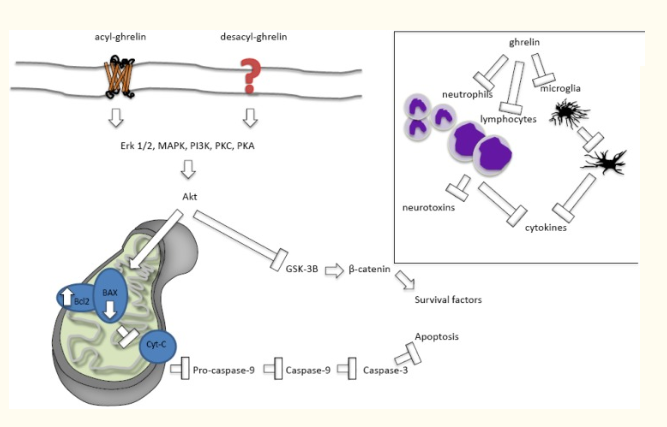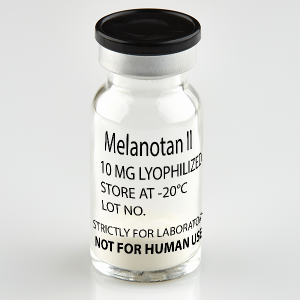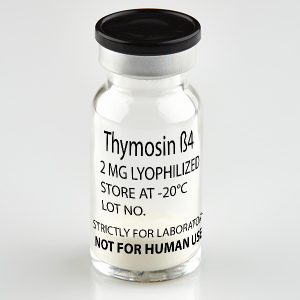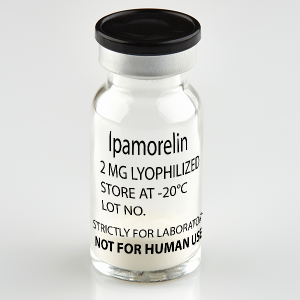GHRP-6 Research
GHRP-6 Effects
1. Improves Memory
The role of physical activity in learning and memory formation has been under active investigation for some time now. Though the exact mechanism has remained elusive, there has always been reason to believe that physical activity improves cognition and learning, particularly when exercise is done immediately following a learning task.
Originally, the benefit of exercise on cognition was chalked up to improved blood flow and vague references to growth hormone (GH). Research in rodents has helped to clarify why GH may be an important factor in memory formation by revealing that GHRP-6 can help to solidify newly formed memories and convert short-term memories into long-term storage[1], [2]. There is also strong evidence to support a role for ghrelin/GHRP-6 in spatial learning tasks[3]. This suggests that exercise-induced cognitive benefits may be mediated through growth hormone secretagogues like ghrelin and that the GH effect may be indirect and, perhaps, secondary to these peptides.
2. Protects Brain Tissue
Animal models of stroke are used to investigate the ability of GHRP-6 to protect neurons and other cells in the central nervous system from the effects of poor blood supply. It turns out that GHRP-6 not only protects brain tissue during acute stroke, but can actually rescue memory deficits following a stroke if administration of the peptide is timely[4], [5]. It seems that ghrelin and its analogues inhibit apoptosis (programmed cell death) and reduce inflammation inflammation in the brain, protecting neurons from both their genetic programming and the surrounding environment following stroke.
Pathway by which ghrelin inhibits apoptosis and reduces inflammation
Source: PubMed
3. Protects Parkinson’s Neurons
Our understanding of the ability of GHRP-6 to protect brain tissue was brought into sharper focus by a 2018 study revealing that ghrelin receptors are found in the substantia nigra, a part of the brain affected by Parkinson’s disease. Patients with known genetic links to Parkinson’s disease show a decrease in the expression of ghrelin receptors on neurons in the substantia nigra. Additionally, rats with this same defect show Parkinson’s symptoms when an antagonist is injected[6]. It stands to reason that agonists like GHRP-6 may therefore be useful in the setting of Parkinson’s. Scientists speculate that the peptide may, by binding to the diminished receptors, reduce apoptosis in neurons of the substantia nigra and slow or even prevent the onset of Parkinson’s.
4. Improves Skin Appearance and Reduces Scaring
GHRP-6 improves the survival of multiple types of cells by reducing programmed cell death. The peptide also interacts with the CD36 receptor, which is known to promote blood vessel growth, particularly in wounds. Research in rats indicates that these properties make GHRP-6 highly useful in wound healing where it increases the rate of wound closure, improves the formation of extracellular matrix proteins like collagen, and interferes with the normal process of scar formation to help organize overall structure at the site of the wound and reduce the appearance of scar tissue[7].
The peptide has also been found to prevent the development of hypertrophic scars. Hypertrophic scars, like keloids, are the result of improper extracellular matrix protein depositions. GHRP-6 prevents this process from occurring, which is a huge boon for people who suffer from this aberrant healing process and thus often put off surgery and other medical procedures as much as possible to avoid the painful scars that develop and cause substantial aesthetic alteration[8].
5. Reduces Heart Problems
Research in porcine models of heart attack shows that GHRP-6 can prevent oxidant cytotoxicity, which is to say that peptide protects heart cells from damage by free radicals[9]. There is hope that this finding will lead to the development of drugs that can be administered following a heart attack to protect cells that are vulnerable, but still viable. Such a drug could reduce death and improve long-term outcome following heart attack.
6. Alters Sex Motivation and Mood
Research in male rats indicates that ghrelin receptors in the central nervous system affect sexual behavior and motivation. Elevated levels of ghrelin, for instance, can boost sexual motivation. Research with GHRP-6 and a modified GHRP-6 designed to antagonize the ghrelin receptor has indicated that ghrelin receptors in specific brain regions help to modulate sex behavior and reward-seeking behavior[10]. These findings are not only applicable to sex and conditions like hypoactive sexual desire disorder, but may also be applicable to hunger and other types of motivation.
There is also evidence to suggest that ghrelin may impact mood as part of its effect on motivation. Research in mice indicates that GHRP-6 and other ghrelin receptor agonists can decrease depression and improve function in parts of the brain associated with mood, particularly in the setting of stress[11]. GHRP-6 could form the basis for research into potential novel treatments for stress, anxiety, depression, and other mood disorders.
Márta Korbonits graduated in Medicine in Budapest and undertook her early clinical training at the Internal Medicine Department of the Postgraduate Medical School, Budapest. She joined the Department of Endocrinology at St. Bartholomew’s Hospital under the mentorship of Professors Ashley Grossman and Michael Besser. Her MD and later PhD studies contributed to the understanding of the effects of growth hormone secretagogues on hypothalamic hormone release and the nature and causes of pituitary tumorigenesis. She was awarded an MRC Clinician Scientist Fellowship and commenced studies that produced novel insights into ghrelin physiology and genetics. Her findings related to the regulation of the metabolic enzyme AMPK by ghrelin, cannabinoid and glucocorticoid opened a new aspect of hormonal regulation of metabolism. In 2008, Márta Korbonits was promoted to Professor of Endocrinology and Metabolism and since 2012, has led the Centre of Endocrinology at Barts and the London School of Medicine. In 2016, Márta Korbonits was appointed a Deputy Head of the William Harvey Research Institute. Professor Korbonits continues to integrate human studies alongside with laboratory-based research and has pioneered several projects in translational medicine.
GHRP-6 Resources
- [1] C.-C. Huang, D. Chou, C.-M. Yeh, and K.-S. Hsu, “Acute food deprivation enhances fear extinction but inhibits long-term depression in the lateral amygdala via ghrelin signaling,” Neuropharmacology, vol. 101, pp. 36–45, Feb. 2016.
- [2] S. Beheshti and S. Shahrokhi, “Blocking the ghrelin receptor type 1a in the rat brain impairs memory encoding,” Neuropeptides, vol. 52, pp. 97–102, Aug. 2015.
- [3] K. Tóth, K. László, and L. Lénárd, “Role of intraamygdaloid acylated-ghrelin in spatial learning,” Brain Res. Bull., vol. 81, no. 1, pp. 33–37, Jan. 2010.
- [4] N. Subirós et al., “Assessment of dose-effect and therapeutic time window in preclinical studies of rhEGF and GHRP-6 coadministration for stroke therapy,” Neurol. Res., vol. 38, no. 3, pp. 187–195, Mar. 2016.
- [5] S. J. Spencer, A. A. Miller, and Z. B. Andrews, “The Role of Ghrelin in Neuroprotection after Ischemic Brain Injury,” Brain Sci., vol. 3, no. 1, pp. 344–359, Mar. 2013.
- [6] Y. Suda et al., “Down-regulation of ghrelin receptors on dopaminergic neurons in the substantia nigra contributes to Parkinson’s disease-like motor dysfunction,” Mol. Brain, vol. 11, no. 1, p. 6, 20 2018.
- [7] Y. Mendoza Marí et al., “Growth Hormone-Releasing Peptide 6 Enhances the Healing Process and Improves the Esthetic Outcome of the Wounds,” Plastic Surgery International, 2016. [Online]. Available: https://www.hindawi.com/journals/psi/2016/4361702/. [Accessed: 23-May-2019].
- [8] M. Fernández-Mayola et al., “Growth hormone-releasing peptide 6 prevents cutaneous hypertrophic scarring: early mechanistic data from a proteome study,” Int. Wound J., vol. 15, no. 4, pp. 538–546, Aug. 2018.
- [9] J. Berlanga et al., “Growth-hormone-releasing peptide 6 (GHRP6) prevents oxidant cytotoxicity and reduces myocardial necrosis in a model of acute myocardial infarction,” Clin. Sci. Lond. Engl. 1979, vol. 112, no. 4, pp. 241–250, Feb. 2007.
- [10] L. Hyland et al., “Central ghrelin receptor stimulation modulates sex motivation in male rats in a site dependent manner,” Horm. Behav., vol. 97, pp. 56–66, 2018.
- [11] H.-J. Huang et al., “The protective effects of Ghrelin/GHSR on hippocampal neurogenesis in CUMS mice,” Neuropharmacology, May 2019.






